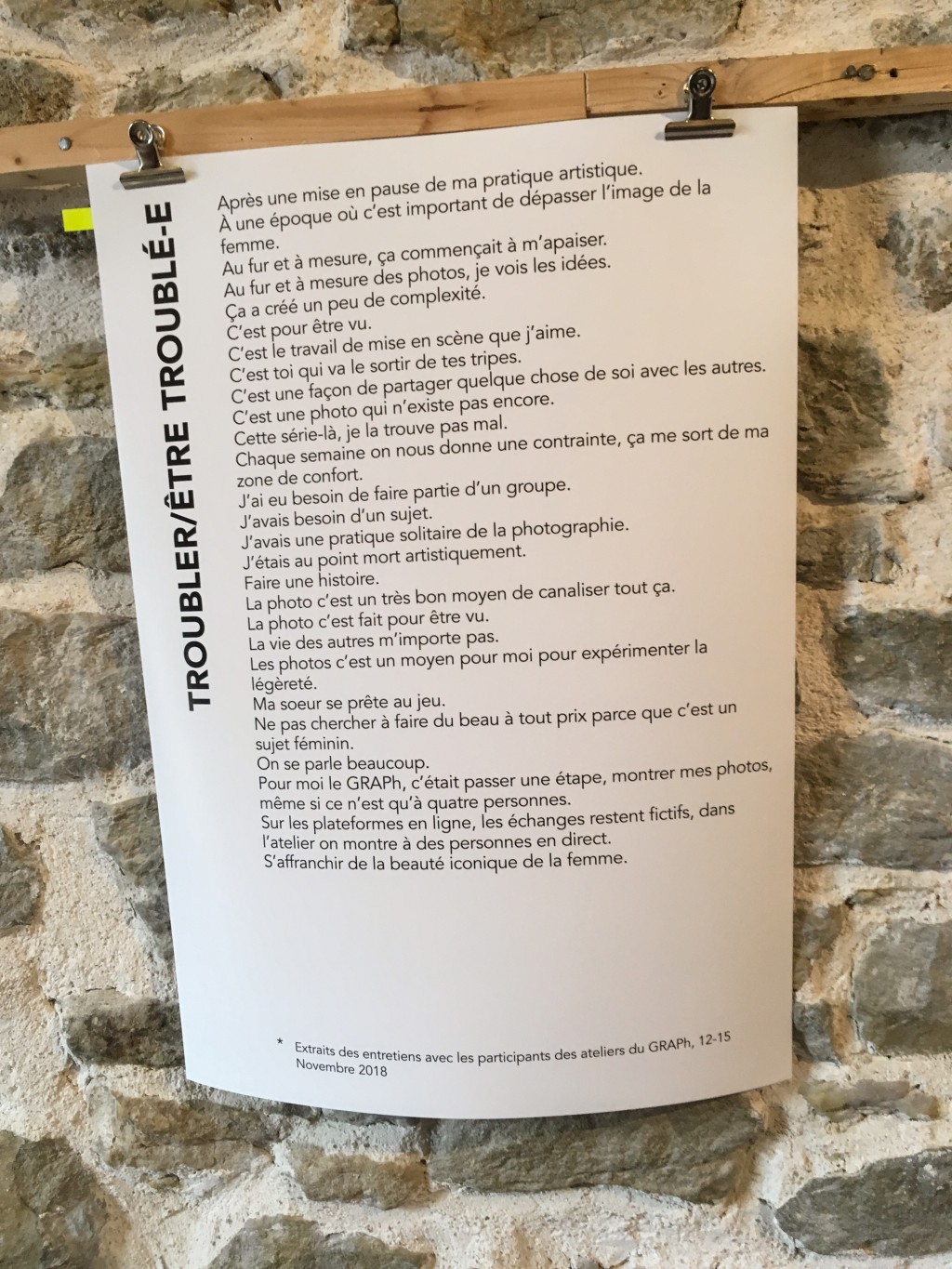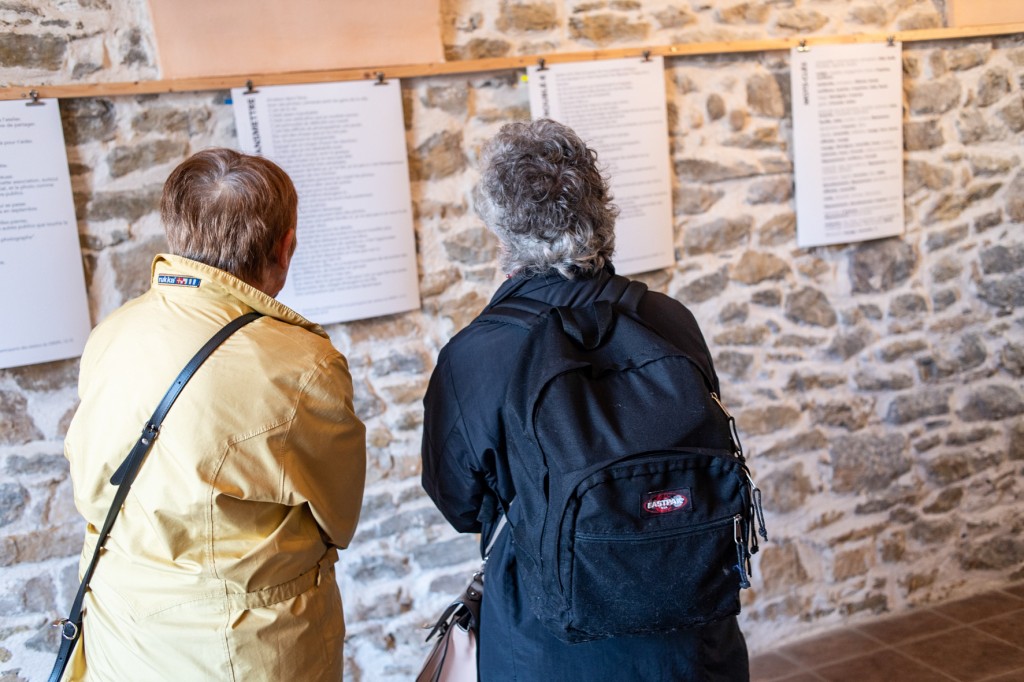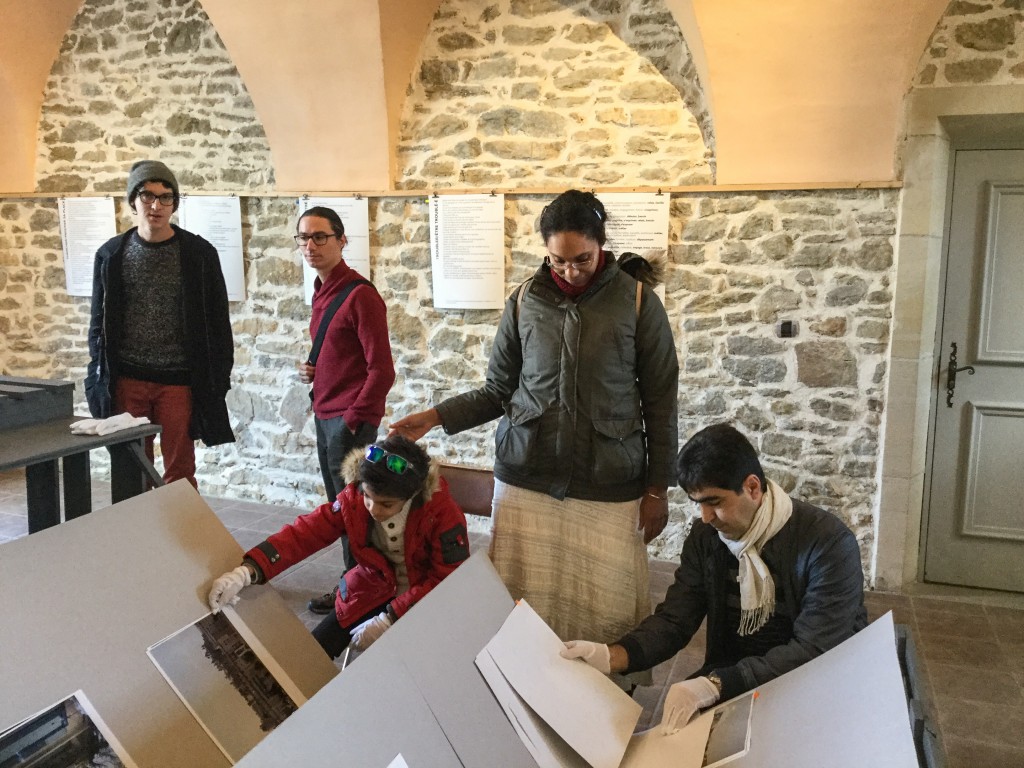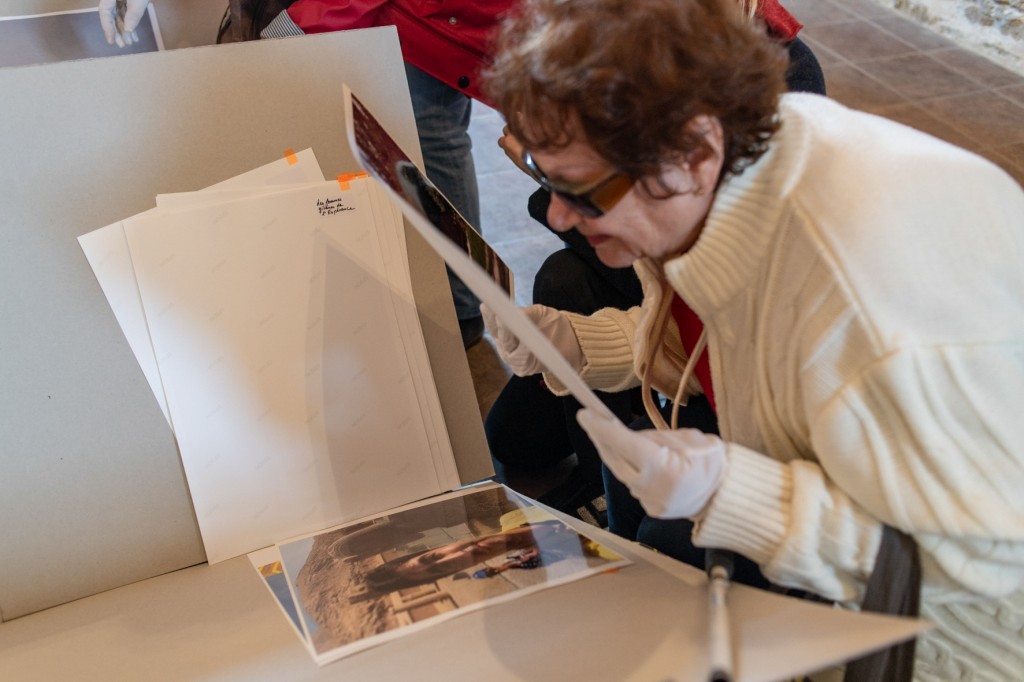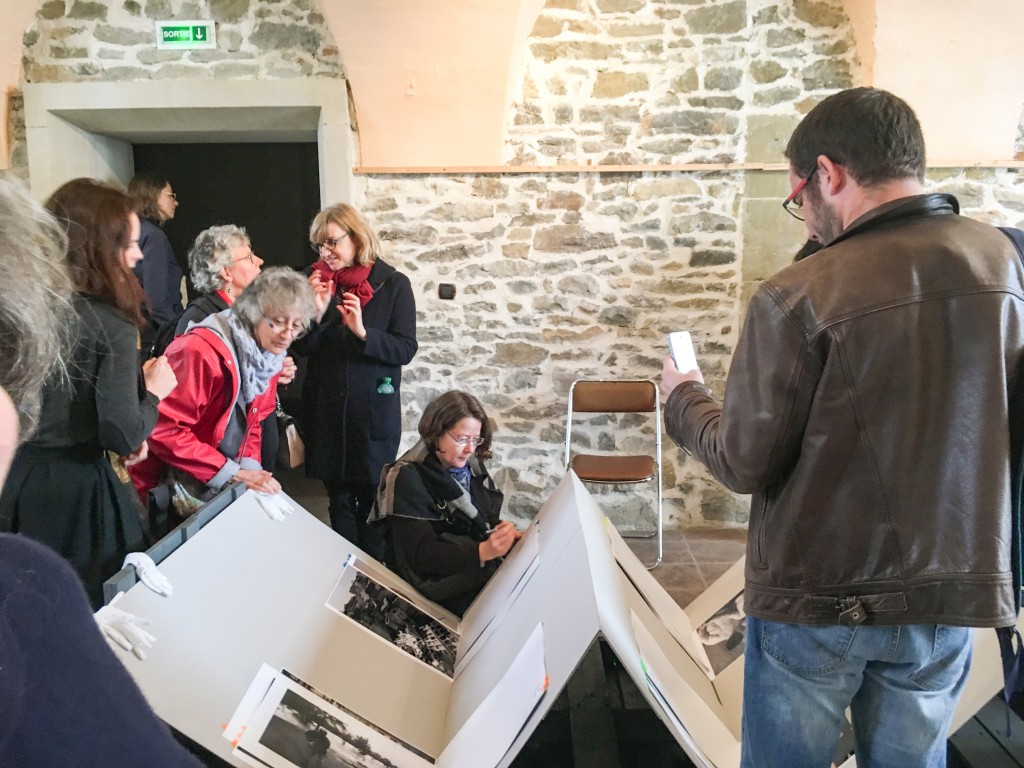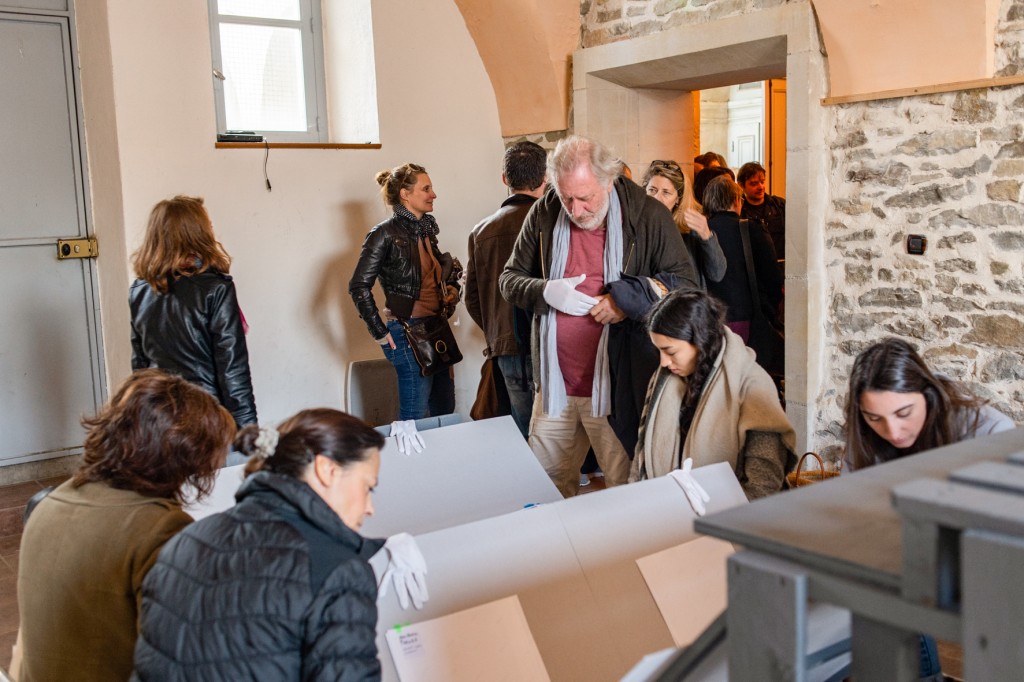Drawing on the photographers’ individual archives, we set about the speculative construction of a collective médiathèque (multimedia library). This médiathèque was based on a dialogic process which involved concerted collecting and classifying efforts. Based on a limited pick, our aim was to unfold retrospectively, in limited time and collaboratively, the intentions behind each visual production.
Facing the photographers
Collecting, categorizing,
decategorizing, recategorizing
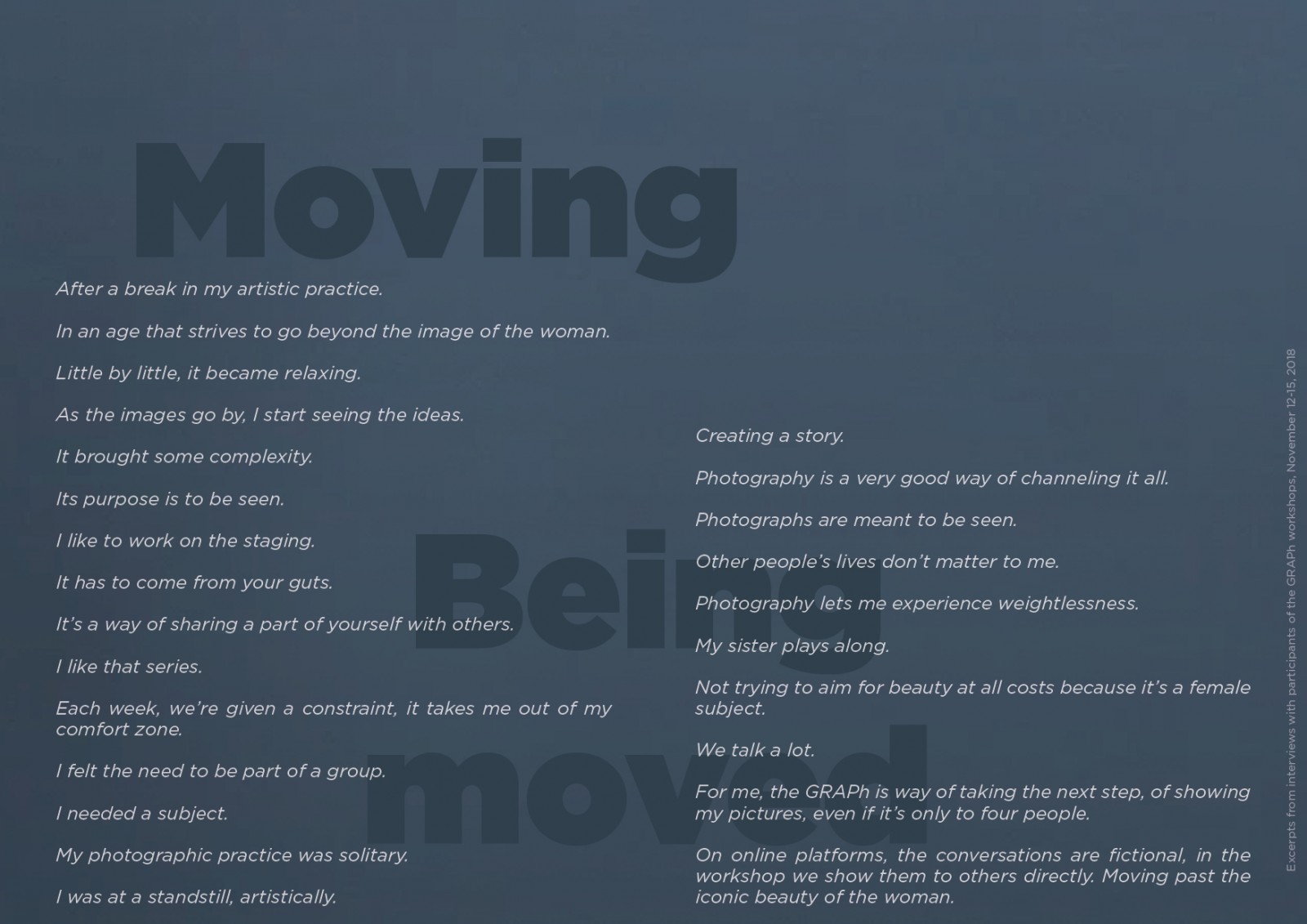
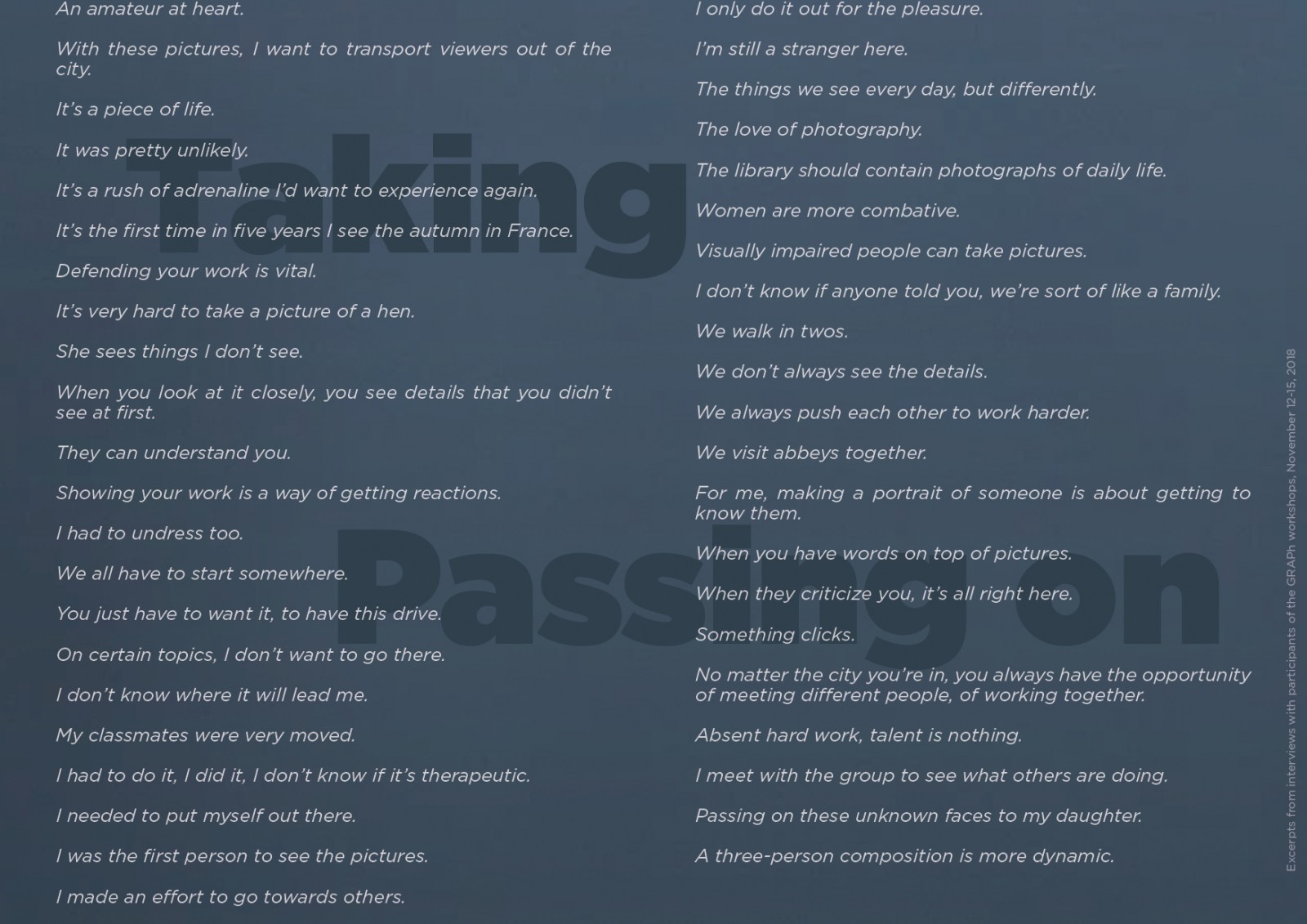
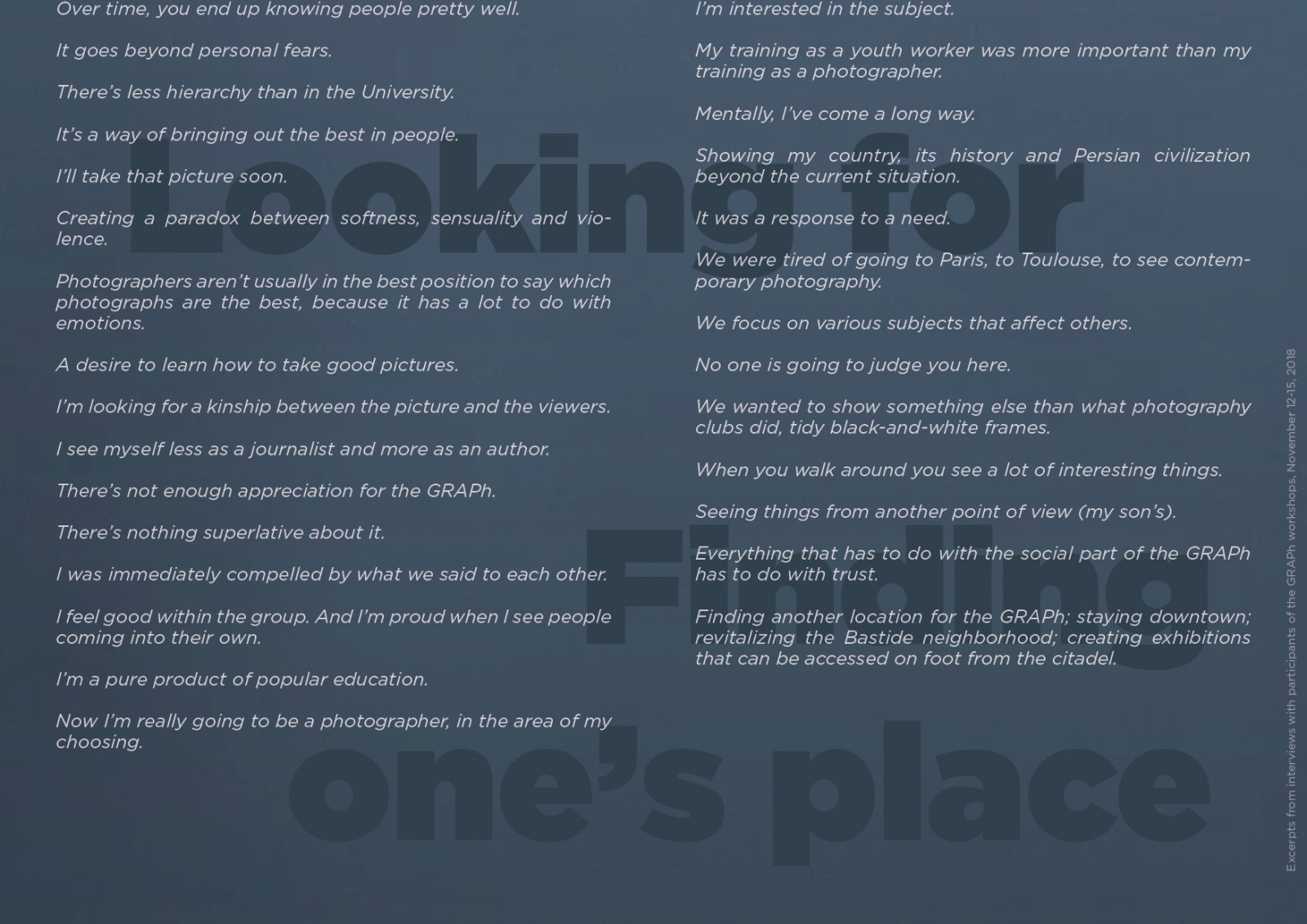
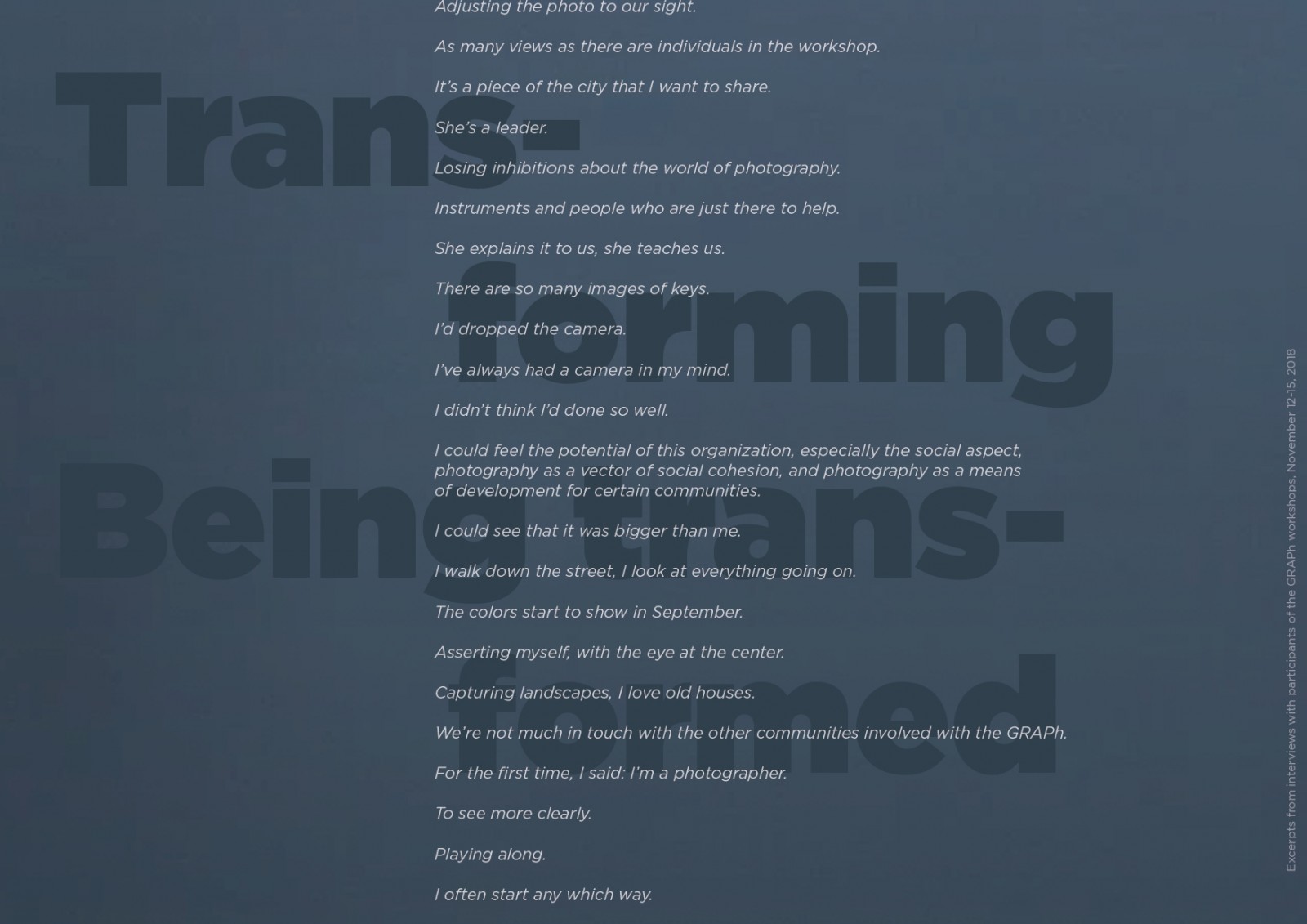
Reenacted promises
The Carcassonne médiathèque was first brought up during one of our initial encounters with the GRAPh: a multimedia resource center had been promised in the years 2000s, but never been built. As a result, we approached this residency as a speculative gesture: what if our research-creation reenacted this promise, by giving visibility to the GRAPh’s collection?
Every photographic or filmic creation yields a document, the promise of an archive. Performing this speculative act meant dealing with three different kinds of promises:
- The promise of the médiathèque (a future location for a multimedia archive);
- The promise of the archives (of containing items relevant in the future);
- The promise of photography (of containing a meaning to come).
The temporality is always the same: it brings the future into the present. A promise, just like an archive, connects periods and temporalities. In urban projects, it creates tensions between spaces and times that highlight urban mutability. A certain endurance is suggested by the promise of a project, prone to inspire emulation or bring aspirations together around a common cause. How should processes of collecting, categorizing, decategorizing and recategorizing operate in the prospect of this future médiathèque ? What prototype should be designed to question the usual categories of knowledge, their hierarchies and regimes of authorial visibility?
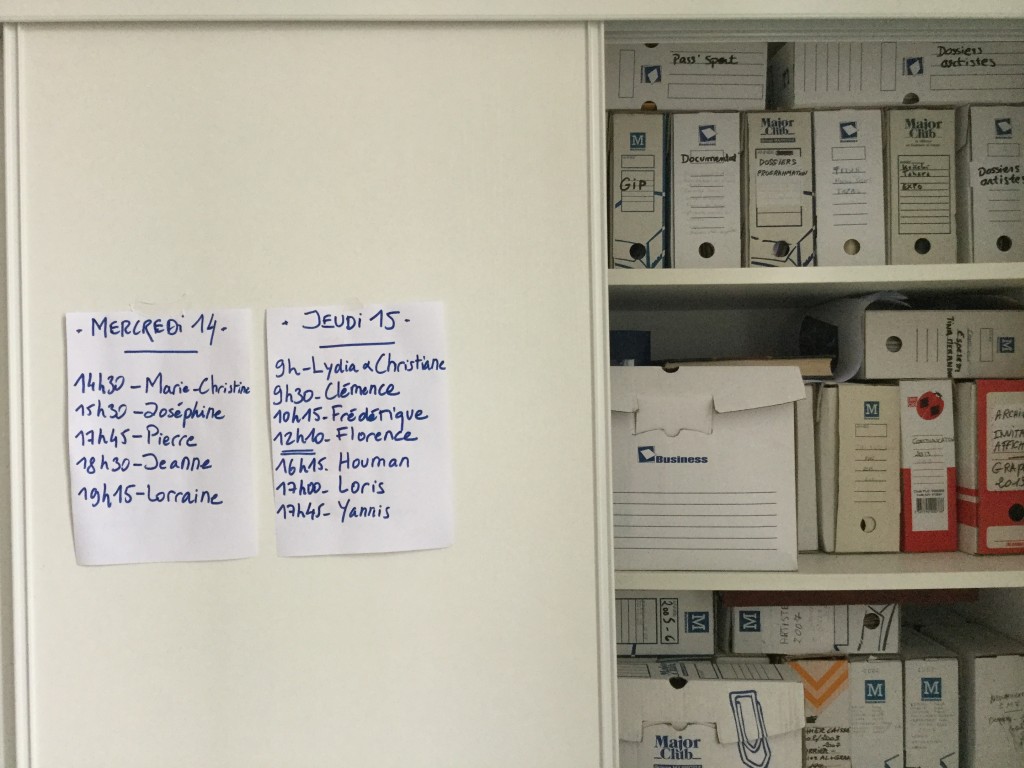
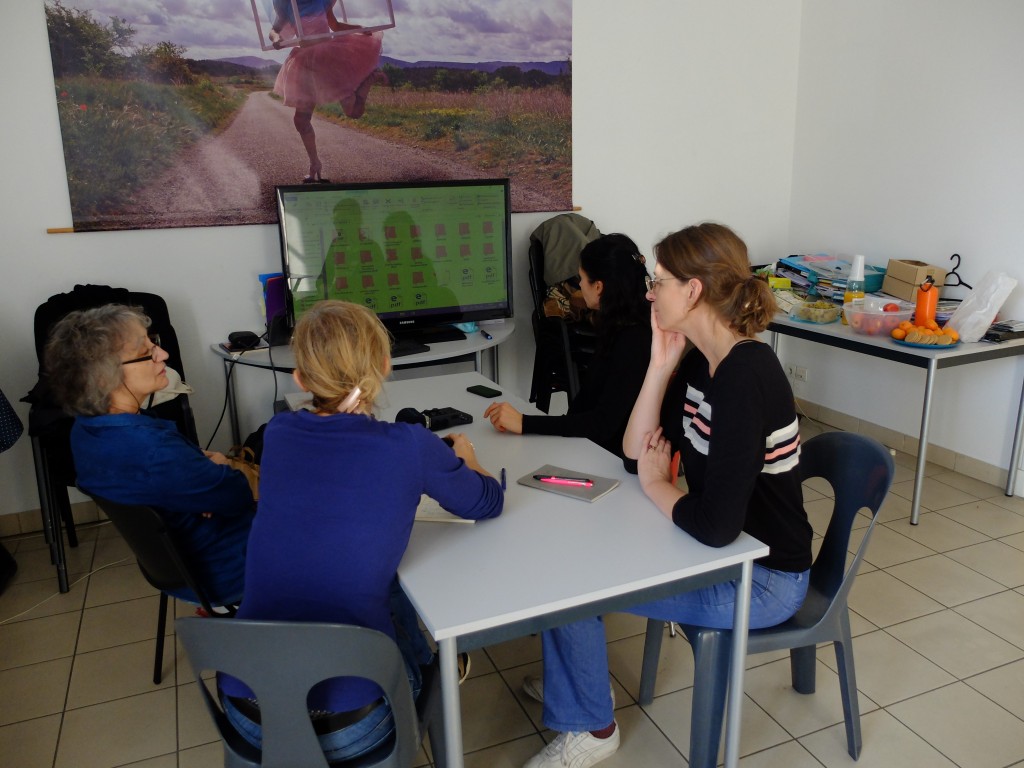
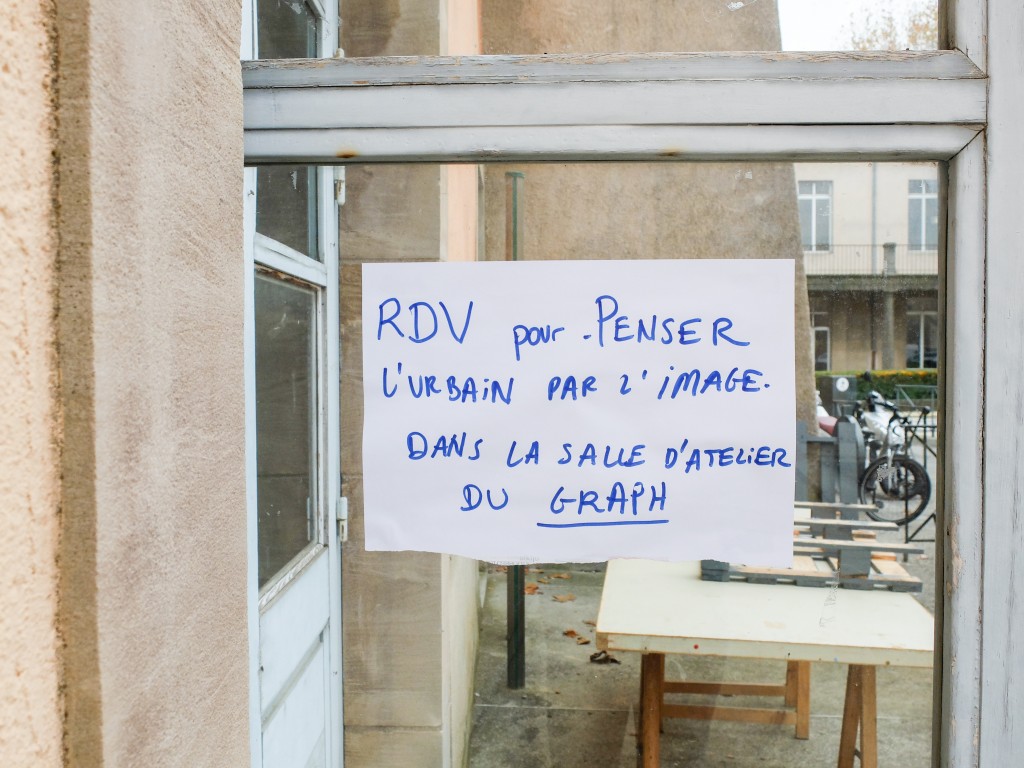
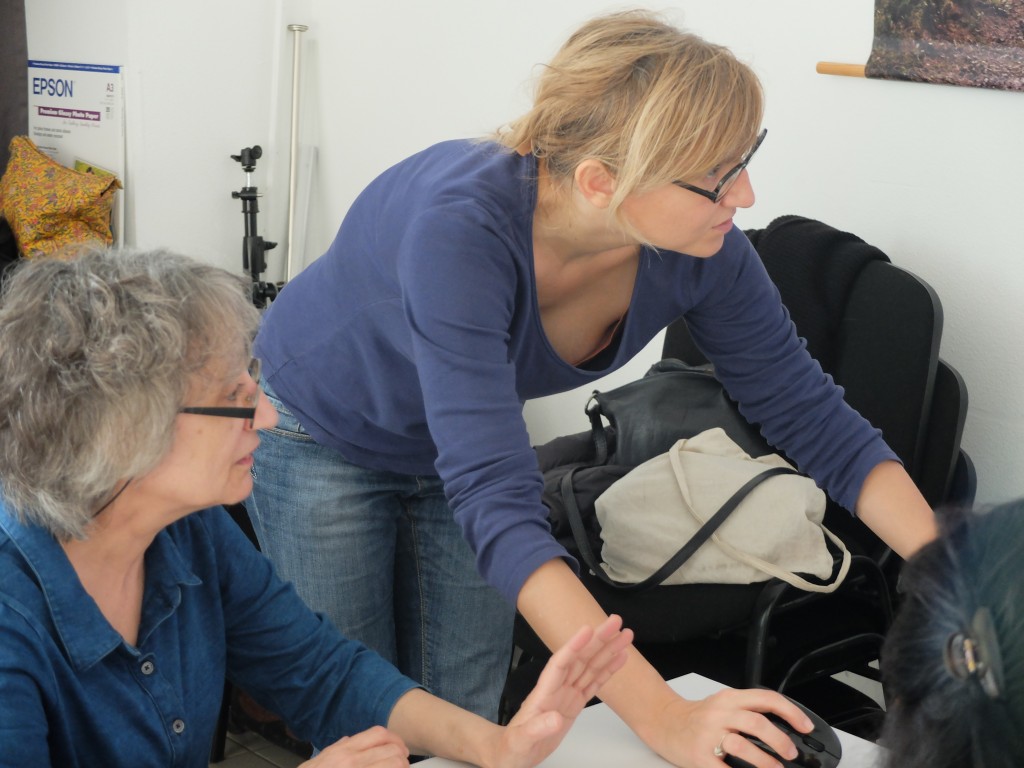
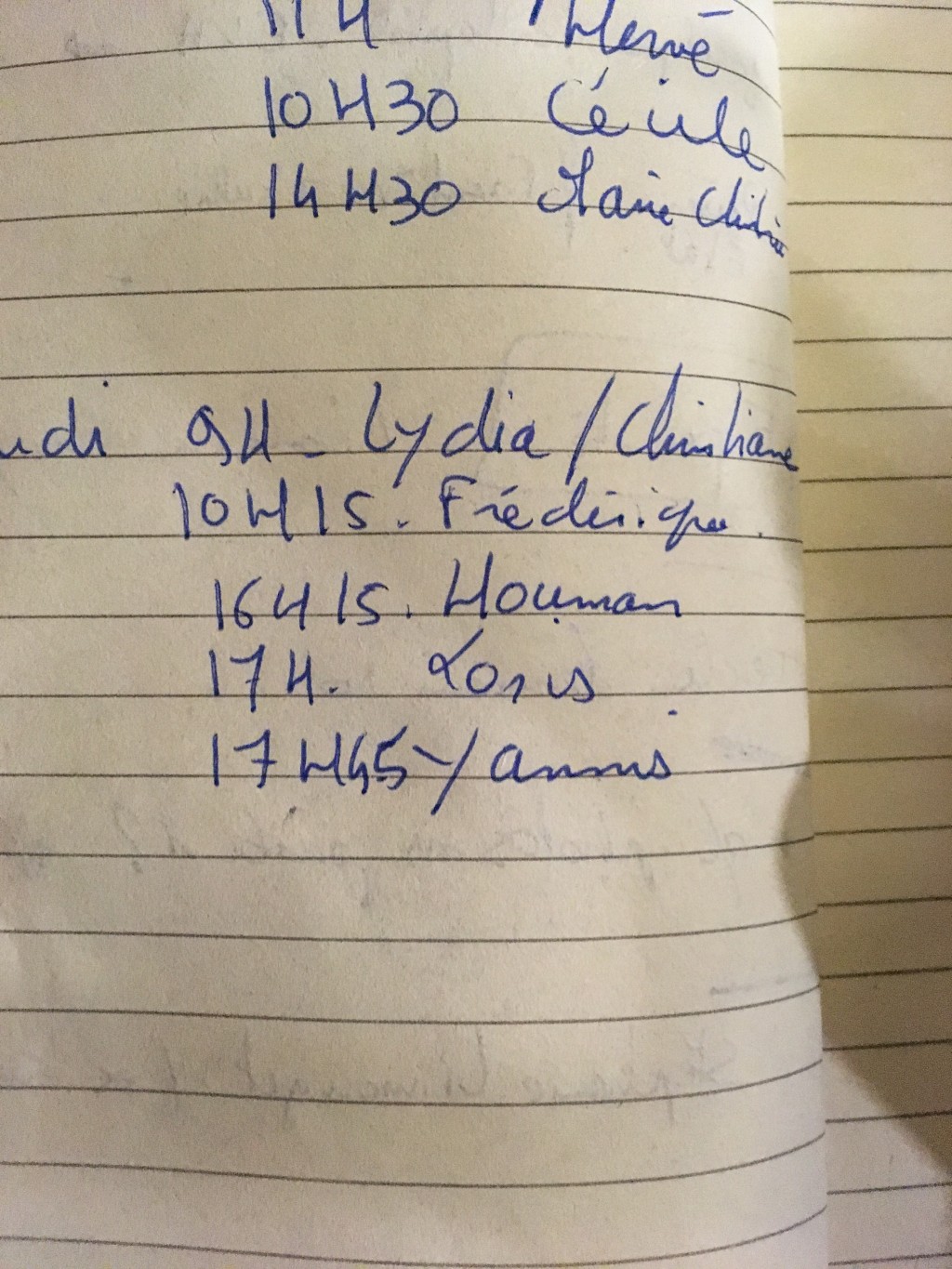
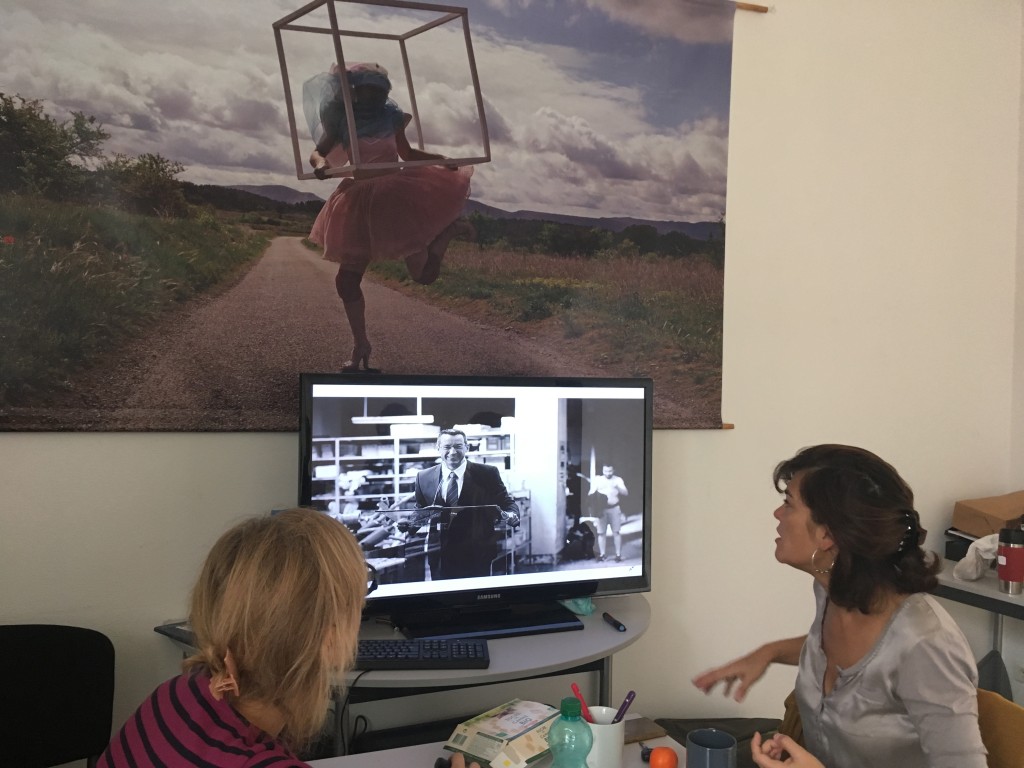
Collecting
The GRAPh first gave us a hard-drive containing hundreds of pictures haphazardly stored. A fragmentary, incomplete and anonymous archive in which certain files were dated and captioned and others were not. Later, during the residency, participants brought or sent additional digital photographs. In the intimacy of their homes, they revisited their personal archives before selecting photographs. Sometimes four or five, sometimes several dozens, sorted or not, the photographs of the GRAPh workshops were shared in their wide variety of content. Over four days, two thousand photographs were taken out of their private setting to be collected.
How do we deal with the 500 photographs produced each week? By tying them back to a tribute to socially engaged photography, called #photographiesociale. Such is the mission of #penserlurbainparlimage during #fictionsdocumentaires #Carcassonne. pic.twitter.com/SnuQdEJ1k5
— Alexa Färber (@faerber_alexa) November 14, 2018
A collaborative selection
The handing over of the photographs was a chance to organize interviews, generally conducted by two members of the group, during which each photographer would give an account of their choices, of the context in which a photograph was taken, and of their practice within the GRAPh (at times spanning over a decade), at the crossroads of an individual path and a collective adventure. Confronted with the archive, tongues loosened up, photographic practice and biographical accounts intertwined. These discussions lasted from twenty minutes to an hour. They took place in an atmosphere of concentration: the pictures popping up on the computer screen, the photographer taking a fresh look at them, noticing some forgotten detail. We caught words on the fly that spoke to the diversity and intensity of these photographic practices.
At the end of the interview, each participant was asked to choose a single image before moving on to the video studio for the next part of the research-creation.
This project experimented with a collaborative way of collecting and selecting archives.
During the Q&A at the Jesuit chapel, which marked the end of the residency on November 17, 2018, art critic and curator Julie Martin, described the process involved in this type of collecting, which brings together researchers, artists, and amateur photographers.
Disrupting the indexing categories
The classification of the collected photographs is at the heart of our project of a fictional médiathèque.
At the end of each interview, based on the photographer’s most notable comments, the two interviewers wrote down keywords reflective of the selected archive. The choice of keywords was the result of collective decision made on the spot. The pace of collecting and classifying was far different from what ethnographers are used to.
To depart from classical indexing practices, we favored words that spoke to the intensity of photographic practices, such as: “daring,” “coming out of the coat,” “together,” “concession,” or “kinship.” The classification is both consistent, because it is rooted in powerful words, and changeable, because it is spontaneous and a product of chance.
We experimented with a counter-documentary practice that goes beyond the usual indexing of pictures based on subject matter, on the professional/nonprofessional status of photographers, on the location of the shoot, or the type of picture (portrait/self-portrait/staged/documentary).
We ended up with four main categories:
- Looking for/Finding one’s place;
- Taking/Passing on;
- Transforming/Being transformed
- Moving/Being moved.
The classification of the photographs was sometimes subject to disagreements, highlighting the divergence at play in multiple and contradictory standpoints.
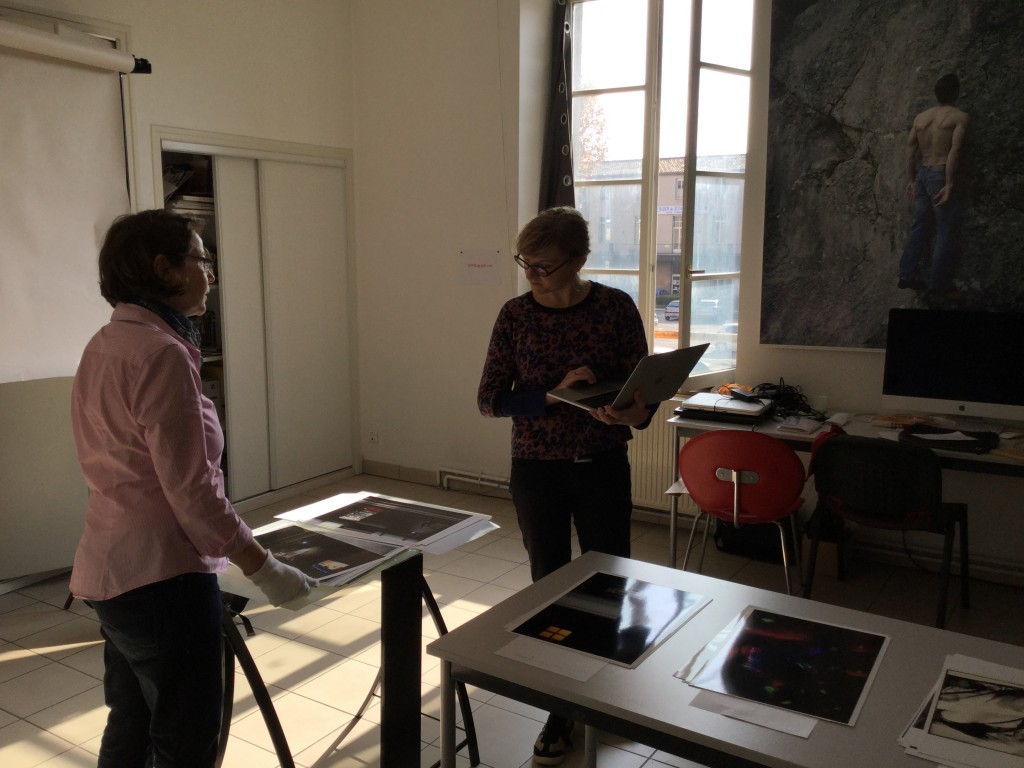
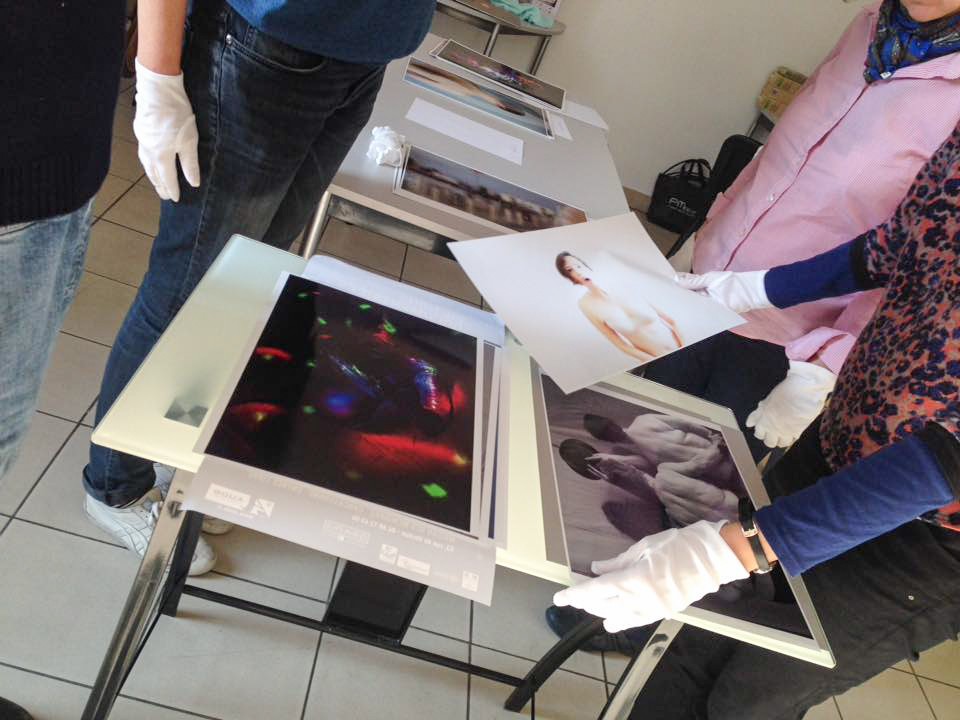
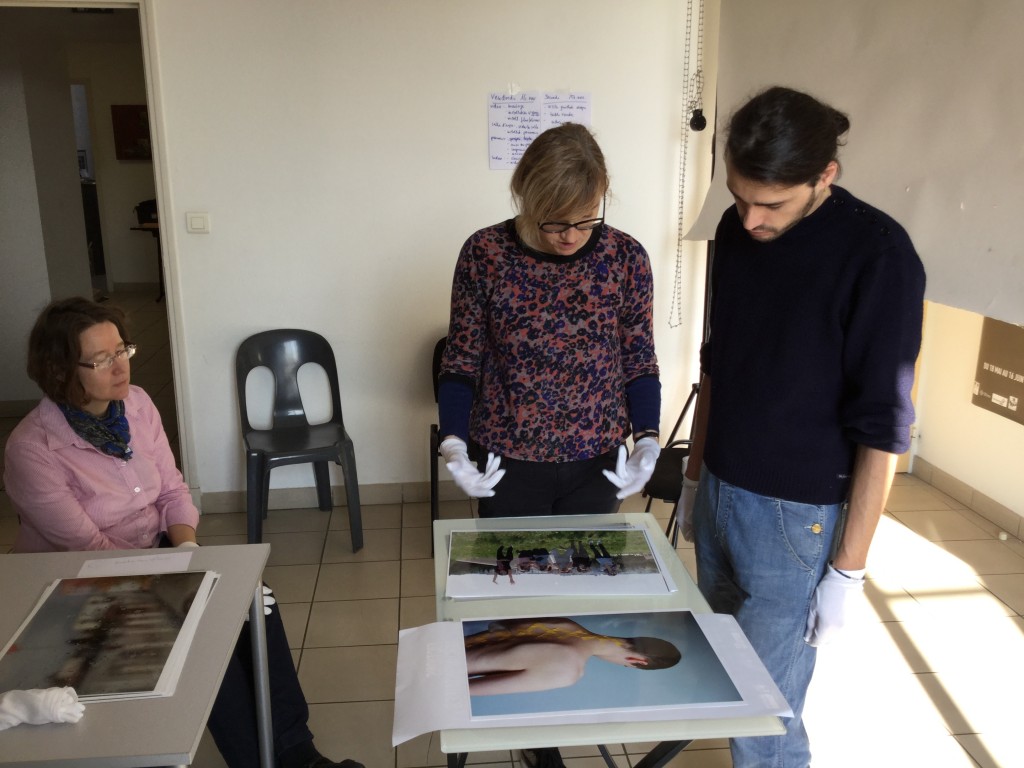
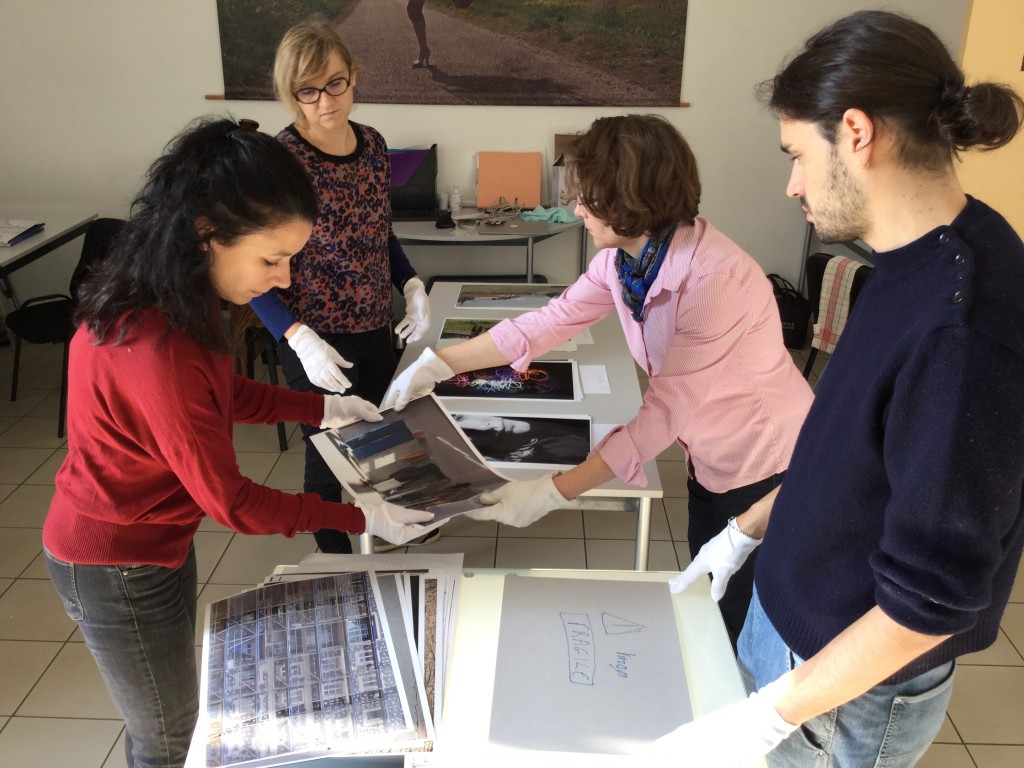

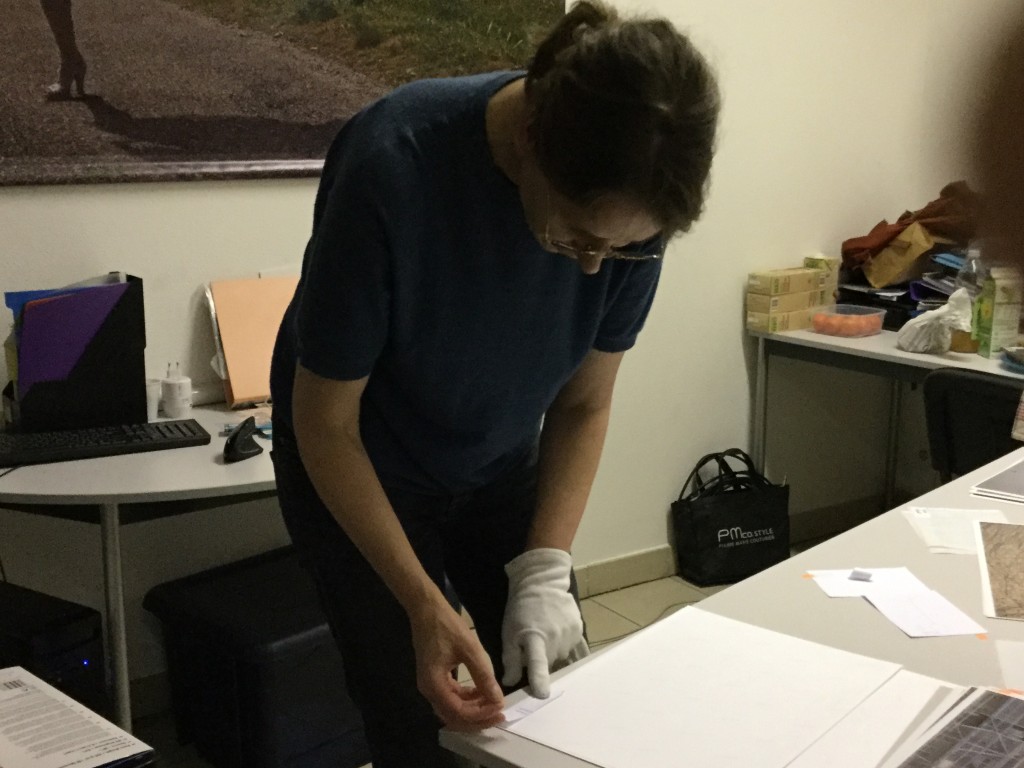
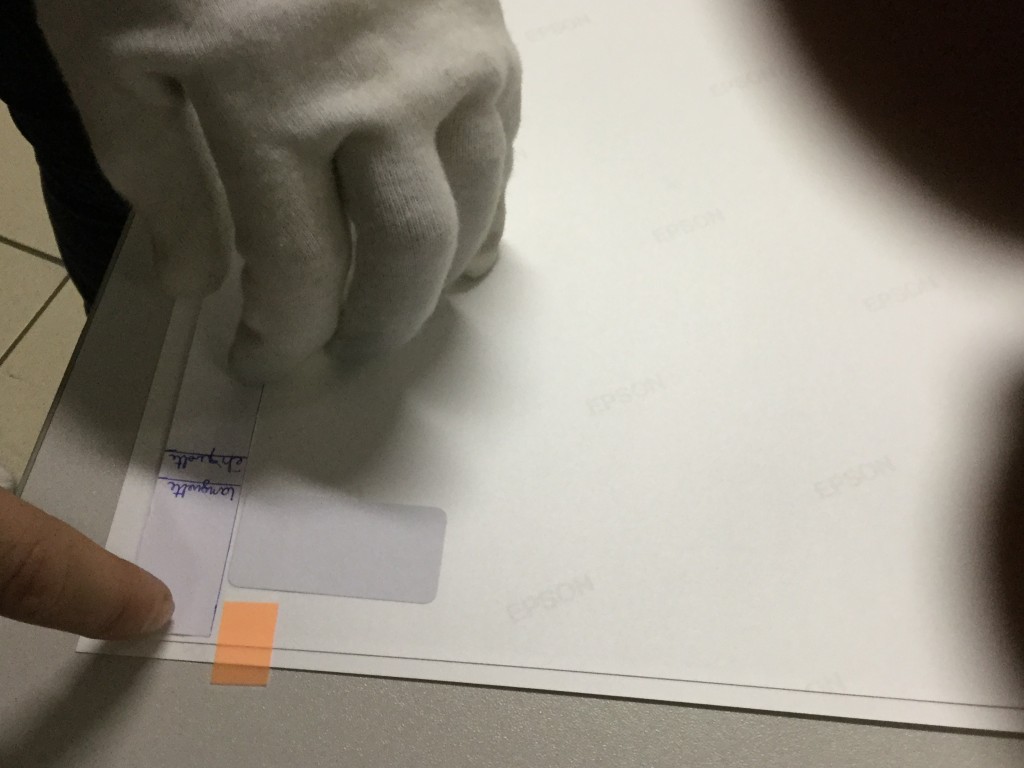
Manipulations
This classification process extended into an exhibition space set up during the residency and open to the public.
The set-up built for the occasion made it possible to display the photographs and the various categories. It consisted in a series of racks holding sixty 30x45cm prints: one photograph chosen by each photographer during the interviews and 40 additional photographs chosen by us. Four racks representing the four main categories. On the back of each photograph was a tag detailing keywords and the corresponding category.
This installation endowed our fictional médiathèque with a material reality. The walls were plastered with categories, keywords, and quotes from interviews. The posters sketched out a potential future signage system.
The installation invited people to physically engage with the archives. The visitors were invited to handle the photographs in order to see them up close or lay them flat, and anyone could shake up the classification by slipping a picture in another rack. The categories again were put to the test. They escaped us.
The re-prises exhibition is now open to the public, fusing the GRAPh #carcassonne photography collection with a médiathèque imagined by #penserlurbainparlimage. pic.twitter.com/19rXGRQLIB
— Alexa Färber (@faerber_alexa) November 17, 2018
This installation performs a temporary and contingent indexing process. It encourages us to reflect on the way we categorize images and those who make them.
This project performs, in a subtle and radical way, a critique of dominant categories of knowledge, representation and classification, as discussed by Alexa Färber, Anne Jarrigeon and Hortense Soichet during the Q&A at the Jesuit Chapel.
